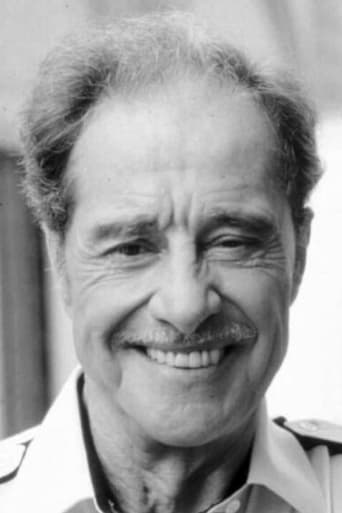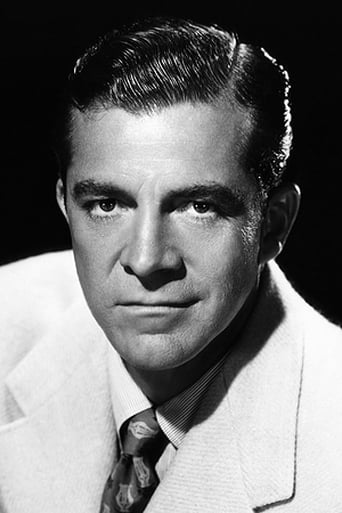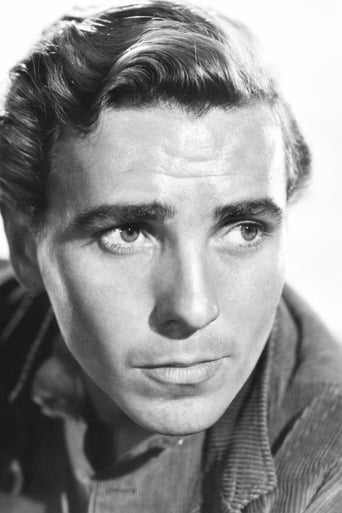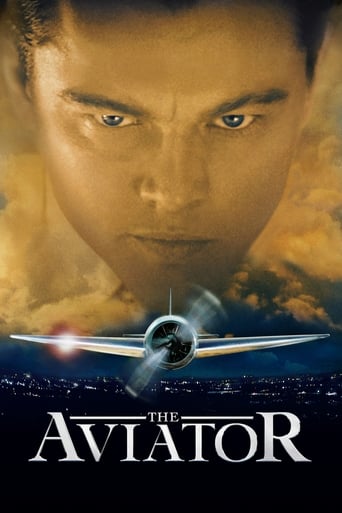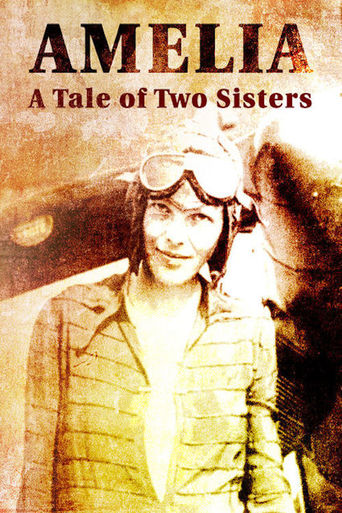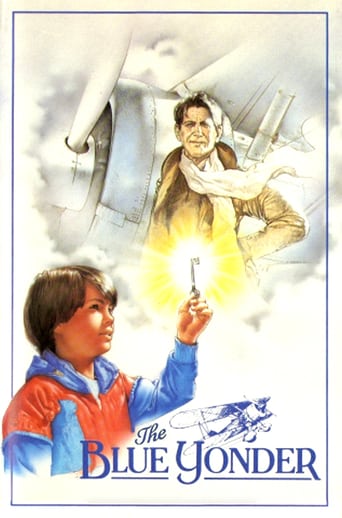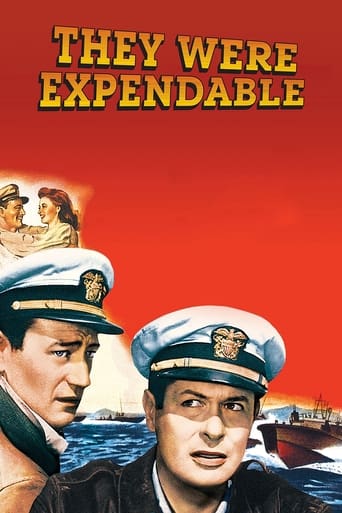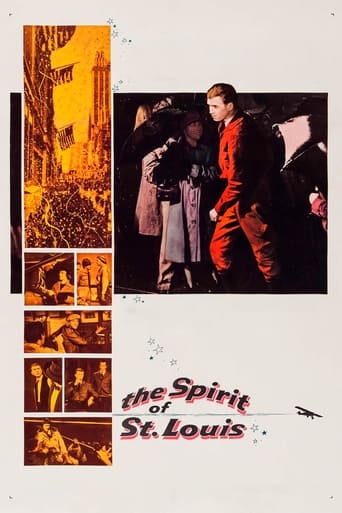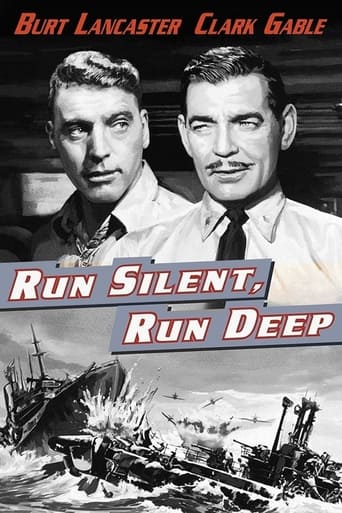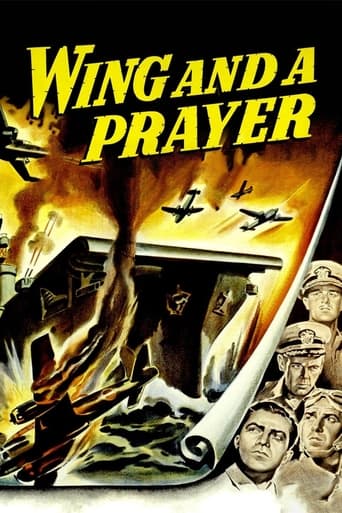
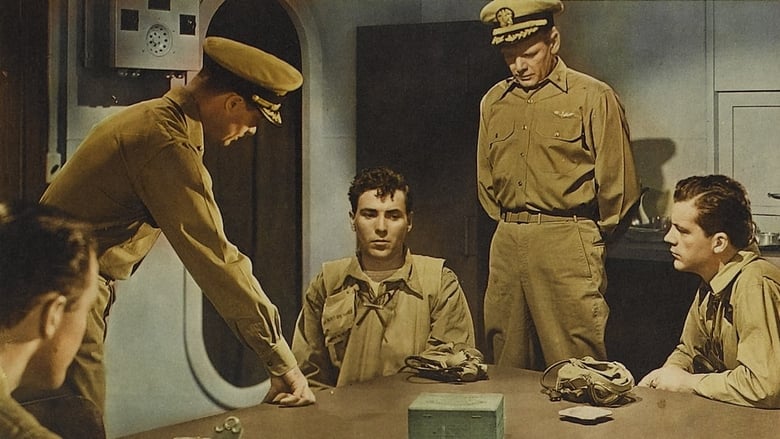
Wing and a Prayer (1944)
An aircraft carrier is sent on a decoy mission around the Pacific, with orders to avoid combat, thus lulling Japanese alertness before the battle of Midway.
Watch Trailer
Cast


Similar titles
Reviews
"Wing and a Prayer" is one of the Hollywood films made about WW II during the war. It was unusual in that it was the first time the U.S. Navy allowed a civilian film crew to shoot aboard a vessel during wartime. Most of the good action stuff we see in war movies was shot by military cameramen and crews. The shipboard filming for the movie was done during the shakedown cruise of the new USS Yorktown carrier out of San Diego. It had been launched Jan. 21, 1943, at Newport News, VA, and was commissioned in April of that year. This was after the former Yorktown had been sunk on June 7, 1942, in the Battle of Midway.The best thing about this film to me is that it shows some of the work that the carrier crews had to do – not just the more thrilling jobs of the Navy pilots. And, it shows some of the insides and routine of the pilots as they prepare for missions. I enjoy this because I served in the Army during the Cold War years leading up to Vietnam, and I appreciate seeing and learning what service in the other branches was like. The studio mixed some real action film into the picture. This was stuff shot during the Battle of Coral Sea and the Battle of Midway. However, it's not nearly as impressive as the use of actual combat footage in later films about the war.The plot moves along rather slowly, and it follows an unnamed carrier, "Carrier X," on a fictitious mission in the South Pacific to fool the Japanese into thinking the U.S. fleet was scattered around the Pacific. That was so that Japan would be tricked into attacking Midway on the way to its final conquest of Hawaii. In reality, the U.S. had broken the Japanese code and knew that Japan planned attack at Midway and then go on to Hawaii.The acting in this film is so-so, with no standouts. I agree with another reviewer who found it a strange casting decision to have British actor Cedric Hardwicke play the unnamed admiral in this film. The character most likely was supposed to be the Chief of Naval Operations at the time whose manner and language was anything but like the proper, well-mannered English of Sir Hardwicke. Otherwise, the film is OK.The Yorktown was not one of the three American carriers in the Pacific when the Japanese bombed Pearl Harbor on Dec. 7, 1941. It had been in the Pacific after it was commission in 1937, but was moved to the Atlantic through the Panama Canal at the outbreak of WWII in Europe. She was in Norfolk, VA when Pearl Harbor was bombed, but she then sailed for San Diego and arrived there Dec. 30, 1941.The Battle of Coral Sea took place May 4-8, 1942, and the Battle of Midway was June 3-7, 1942. The new Yorktown (CV-10) joined the Pacific Fleet by mid-1943 for the duration of the war. It was decommission in 1975 and is now a museum ship and national historic landmark at Patriot's Point in South Carolina. On May 19, 1998, marine explorer Dr. Robert Ballard led a National Geographic research team that discovered the wreck of the Yorktown. It was more than three miles down on the ocean floor."Wing and a Prayer" was released in America after its July 28, 1944, premier in Providence RI. The 1970 movie, "Tora! Tora! Tora!" is a much more accurate, detailed and historic account of the Battle of Midway. It is done with excellent portrayals of the Japanese as well as American forces and units.
Combining actual battle footage with dramatic recreations, "Wing and a Prayer" starts months after Pearl Harbor with the question, "Where is the Navy, and why aren't they doing anything?" The answer is very simple---they weren't ready, and the Naval commander (Sir Cedric Hardwicke) admits this, along with the fact that Pearl Harbor took a bigger beating than the United States wanted to admit. It takes months for the ship commanded by Charles Bickford (and his assistants, Don Ameche and Dana Andrews) to see combat. They had brief contacts with the Japanese which caused a few casualties, as well as having several accidents that proved this ship was not ready to confront the enemy. When the big battle does occur, it is obvious that this ship needed extra time for training to confront Japan head on.Seriously looking at what was going on in the Pacific, the film is more than just gripping propaganda with an all-star cast. It is the view of what happens when men gather to fight. They don't just go out there with guns loaded or bombs ready. It takes a lot of strategy and an intelligent battle plan to fight for a common cause against evil. In addition to the three stars I already mentioned, such familiar faces as William Eythe and Henry (Harry) Morgan are featured. An amusing small part of the storyline involves a fictional character who carries an Oscar on the plane with him that is later revealed to be one of Betty Grable's partners in a magazine photo kiss. Grable, along with Alice Faye, appears in a brief clip from "Tin Pan Alley", used over a split scene between the sailors watching the film and the commanders discovering they are in enemy territory. The scene of the film breaking, being fixed, and then all of a sudden being called for duty is unforgettable in this message of priorities. There are plenty of moving scenes, yet not one speech of "why we fight" or "why we must win". The honesty of human error is explored and adds to the reality of the situation, making this one of the most prominent of all war movies made during that time.
"Wing and a Prayer" really gives those of us not born yet a realistic idea of what life on a carrier was like going up against Japan in World War II. The tough decisions brought on by war were very poignant as were the losses of friends and shipmates in combat. The film was a bit murky at the end as to how the carrier (name?!) fit in with the Battle of Midway and the Japanese ship models were pretty cut-rate, even by 1940's standards. Using U.S. Navy Wildcat planes with white circles painted over their US star to represent Japanese planes was campy, but understandable since the US was in the process of really shooting all of the real zero's out of the sky during the time of the movie. Harry "MASH" Morgan was a 29 year old pilot hotshot that was nice to see him in his prime. Don Ameche did a very good job being a serious-as-death commander who had to be a hard *ss in order to send men into mortal combat. A great film!
The best characteristic of this film is the fine quality of the film in terms of cinematic depth-of-field and clarity. There is excellent camera work, especially in the complicated action scenes. Each scene is balanced and seemingly well-edited. The theme of the movie is somewhat weak relative to the fight/no fight stance of the U.S. Navy, and it is overpowered by the many action scenes which resemble a "Victory at Sea" format. The facts of the battle at Midway Island as presented in this movie are somewhat questionable. The superior forces of the Japanese Imperial Navy could best any navy in early June of 1942. That good fortune played a role in the American fleet's victory is not in question, that poor planning and accident forced the Japanese Imperial Navy's tactics is also accepted. Beyond these general facts it is difficult to accept the overstatement that the position of the U.S. Navy was that "This is the battle we've been praying for." There is also some question in the film as to the accuracy of the reports concerning the U.S. torpedo planes' success. In essence, the Battle of Midway was decisive, and very lucky for the Americans. To present the battle and victory as well planned and well coordinated is misleading. A word on acting: Don Ameche as Commander Bingo Harper is outstanding. His performance is solid in terms of the classic dramatic hero. As commander, he never wavers from his responsibility, he does what must be done, and he understands both how much victory means and what price must be paid.


